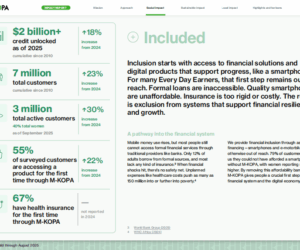The Middle East and Africa (MEA) smartphone market remains resilient in the second quarter (Q2) of 2025. The region recorded a 3% year-on-year (YoY) growth, according to a report by Counterpoint’s Market Monitor service.
The favourable market performance marks the region’s second consecutive quarter of growth. Festive promotions during Eid al-Adha, improved economic conditions, and stronger local currencies all contributed to the surge.
According to Senior Analyst Yang Wang, “The MEA smartphone market entered 2025 with a strong recovery and is now steadying, with ASPs rising 7% YoY as consumers shift toward higher-end models.”
“The sector is also consolidating, with smaller brands struggling to survive while leading players strengthen their position through differentiated products, partnerships, and an expanded offline presence. Chinese brands dominated with a 59% market share in Q2 2025, while a few global players like Samsung and Apple maintained a strong footing in the high-end segment,” he explained.

Per the report, the consumers’ shift toward premium models reflects growing demand for advanced features like AI translation, 5G connectivity, and high-refresh-rate AMOLED displays.
However, the budget segment (under $100) remains the largest, driven by financing models and the migration from feature phones. While the $200-$299 price band shrank, losing share to higher price categories, which saw the fastest growth. Consumers are balancing aspirations for premium devices with the appeal of festive discounts.
Smartphone shipments in MEA: market leadership according to brands
Samsung retained its lead in the MEA smartphone market, growing 1% year on year. The brand simplified its portfolio, reducing active models from 105 to 73.
Its A-series drove growth with competitive mid-range offerings and a broader retail presence. Flexible payment options, holiday promotions, and trade-in programmes all contributed to Samsung’s popularity. A significant investment in AI-focused marketing and local manufacturing helped reduce costs, reinforcing its leadership.
Similarly, Transsion Group, which includes TECNO, Infinix, and itel, accounted for 26% of MEA smartphone shipments in the second quarter. TECNO dominated the market with a 17% share, thanks to its strong distribution network and affordable, feature-rich devices.
TECNO excels in the low- to mid-end segments, thanks to effective marketing tailored to local needs. Infinix experienced 14% year-on-year growth, owing to youth-focused campaigns and dual-SIM devices with optimised camera features. The brand is also expanding into the $300-$599 range, while remaining strong in the sub-$200 category.


However, itel continues to struggle, with weak positioning, supply chain disruptions, and a lack of a clear strategy impeding its growth. Despite this setback, itel continues to focus on ultra-affordable phones under $100, catering to budget-conscious consumers.
Xiaomi also reported modest gains, with shipments increasing 9% year on year, but its performance was tempered by a cautious strategy. The brand reduced active models from 95 to 75, concentrating on a few ‘hero’ models.
Rivals such as TECNO and HONOUR used aggressive pricing and localised marketing to limit Xiaomi’s gains. Its average selling price fell 8% YoY, reflecting a strong reliance on the $50-$99 price range. While Xiaomi has a strong offline presence, its growth is modest when compared to competitors.
Apple saw a 28% YoY increase in shipments, owing to increased channel penetration and anticipation for the iPhone 17’s release in Q3 2025.
The iPhone 16e experienced triple-digit quarterly growth, aided by promotions and financing options. Demand for high-end devices was particularly strong in GCC markets, where consumers are increasingly preferring premium smartphones.
5G adoption accelerates growth
Affordable 5G smartphones are a key growth driver in the region, with adoption rising to 37% during the review period, fuelled by sub-$100 devices from brands such as TECNO, OPPO, and itel.
Nigeria, South Africa, Egypt, and Kenya spearheaded the charge. In South Africa, MTN and Vodacom’s investments, combined with tax reforms, increased sales. Egypt’s expansion was fuelled by IMEI whitelisting and domestic production. Kenya’s mobile-first economy, fuelled by M-Pesa and microlending, also played an important role. The $200-$599 price range accounted for 56% of the market, appealing to both first-time buyers and those looking to upgrade.
In terms of consumer trends and price segmentation, MEA consumers face a dual demand for low-cost and premium devices. The budget segment remains dominant, helped by increased availability and financing options.


Meanwhile, higher-priced categories are expanding the fastest, propelled by demand for advanced features such as telephoto cameras, fast charging, and 5G connectivity. Many customers wait for holiday discounts before upgrading, balancing cost with cutting-edge technology.
Brands are tailoring their portfolios to meet these varying demands. Affordable 5G phones entice first-time buyers, while mid-range and premium devices appeal to upgraders. Brands are lowering costs and increasing accessibility through partnerships with operators and retailers, as well as local production.
The MEA smartphone market is expected to continue growing for the rest of the year. TECNO’s strong performance, Samsung’s leadership, and Apple’s premium gains demonstrate the region’s diverse dynamics.
As 5G adoption accelerates and consumer preferences shift, brands must strike a balance between affordability and innovation. The holiday seasons and new product launches, such as the iPhone 17, are likely to shape the market’s trajectory in the third quarter and beyond.








